If you would like to play specific songs on your kalimba but you don’t know where to start, or if you feel you haven’t really connected well with your kalimba, you might want to consider getting the 6-Note Pentatonic Song Book.
Here is a remarkable fact: if you have a big kalimba with lots of notes, you may very well be able to use the instructional material from a kalimba with fewer notes, but you need to know which tines map into the smaller kalimba’s notes.
I was talking with a customer who really wanted the 8-Note kalimba and not the 6-note kalimba, but she really liked the songs in the 6-note book, which has several spirituals. I told her that she could play every song in the 6-note book on her 8-note kalimba, and we show you exactly how to do that here. But first, why would someone want to do that?
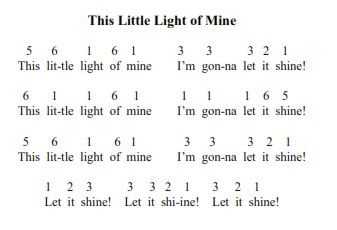
The songs in the 6-Note Pentatonic Book are written in a numbers-based tablature. They tend to be simple well-known tunes. Because they are written with numbers representing the degrees of the scale instead of geometric tablature, these songs can be played on any kalimba where you have those degrees of the scale.
Write the note numbers on the appropriate tines with a Sharpie marker. You can remove them with alcohol wipes.
If you don’t know what I mean by numbers representing the “degrees of the scale”, I mean “1, 2, 3” = “Do Re Mi”, or “Doe a Deer”. What is called the “C tuning” in the 6-Note Book is actually any tuning that has 1 as the lowest note and 8 as the highest note. By the way, 8 is the same note as 1, but one octave higher.
The second part of the 6-Note Book uses a “5 tuning”, which has the 5th in the bass. Songs like “Amazing Grace” and “This Little Light of Mine” and “As I Went Down to the River to Pray” and “Swing Low, Sweet Chariot” have a one octave range, but start and end on the 5th. I think this tuning is more useful than the original tuning, which starts and ends on the 1 or root note.
On the 6-Note Kalimba, you need to retune one note to go from “C Tuning” to the “5 Tuning” in F, but on kalimbas with more notes, you don’t have to do any retuning at all, but you do need to know which numbers to write on which tines.
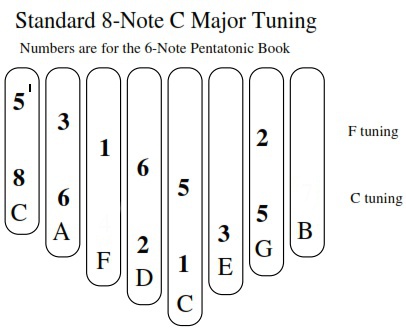
The chart above indicates the notes of the standard 8-Note kalimba tuning in C. Above the note names are the notes 1, 2, 3, 5, 6, 8 – note that 4 and 7 are missing. These six notes are the notes in the “C tuning” covered by the first part of the 6-Note Book. Higher up on the diagram, you see the notes 5, 6, 1, 2, 3, 5′ – these represent the “F tuning”, which is a “5-based tuning”, which you need to play songs from the second part of the book. (The 5′ notation indicates the 5 that is an octave above the low 5.)
By the way, when playing in the “5 tuning”, you are in the key of F, which wants to have a Bb instead of a B natural. That note, the 4, is not required in the pentatonic scale, and as it is the wrong flavor of B for the F scale, try to avoid playing it by accident.
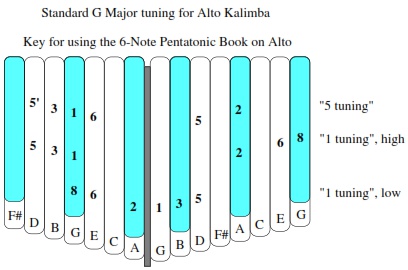
The Alto Kalimba with 15 notes has so many tines that you don’t have to double up on keys (C and F) as we did with the 8-note kalimba. You can play both the “1 tuning” and the “5 tunings” in the key of G. However, at least to start with, I suggest you still label only the minimal 6 notes on your kalimba.
Another luxury of having 15 notes: you can choose between a lower “1 tuning” or a higher “1 tuning” (which reads the “C tuning” part of the 6-Note book – we don’t call it a “C tuning” here because this kalimba is in G). That is, once you master the songs in the first part of the 6-Note Book on the lower octave of your Alto kalimba, you can wipe your tines clean, write the upper octave numbers, and learn the same songs again with higher notes. This is actually an important step in becoming more familiar with your Alto kalimba.
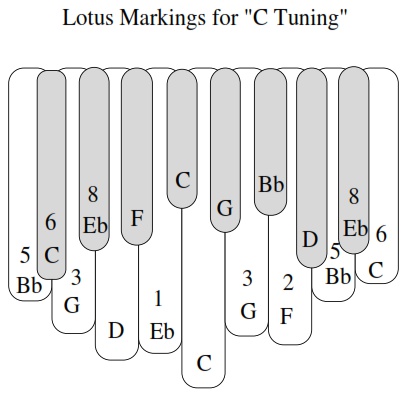
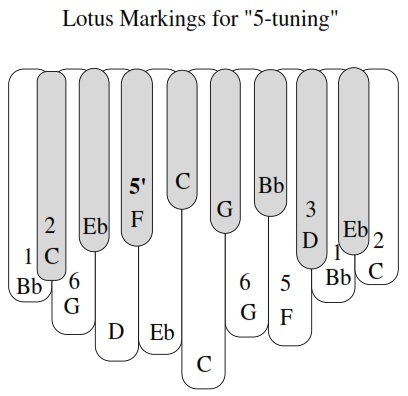
The Lotus Karimba is a strange instrument – it is easy to play great sounding music, but it is hard to make it play a specific song because the notes are laid out in such an odd pattern. If you are interested in making progress with this instrument and actually learning to play specific songs, marking the tines with the numbers as in the diagrams above, and getting the 6-Note Pentatonic Book is a good place to start.
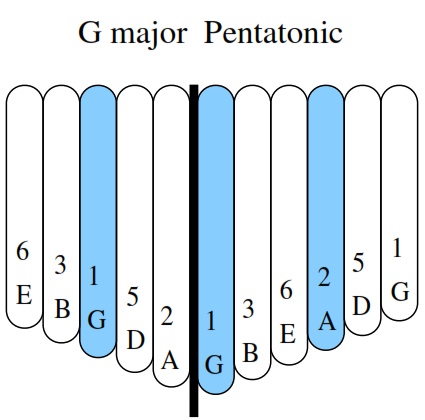
We give you one more example of how you can use the 6-Note Book with a different kalimba – the 11-Note Pentatonic Kalimba. The degrees of the scale are shown here. Just like the Alto kalimba, you can choose to learn the lower octave or the upper octave for the “1 tuning” songs. You can see where the “5-tuning” notes would go – start on the D = 5 on the left hand side, and go up (6, 1, 2, 3), ending on the high D = 5 on the right side of the instrument.
If the kalimba you are looking for is not here, you might look for it in the tuning library where most of the tunings are presented with the scale degree numbers. Standard and alternative tunings for over a dozen different kalimbas are listed there (totaling over a hundred separate tunings).


Sign up for our newsletter and free resources with your email address:
We pinky promise not to spam you and to only send good stuff.
 Christmas in July 2025
Christmas in July 2025 Patriotic and American Music for Kalimba
Patriotic and American Music for Kalimba